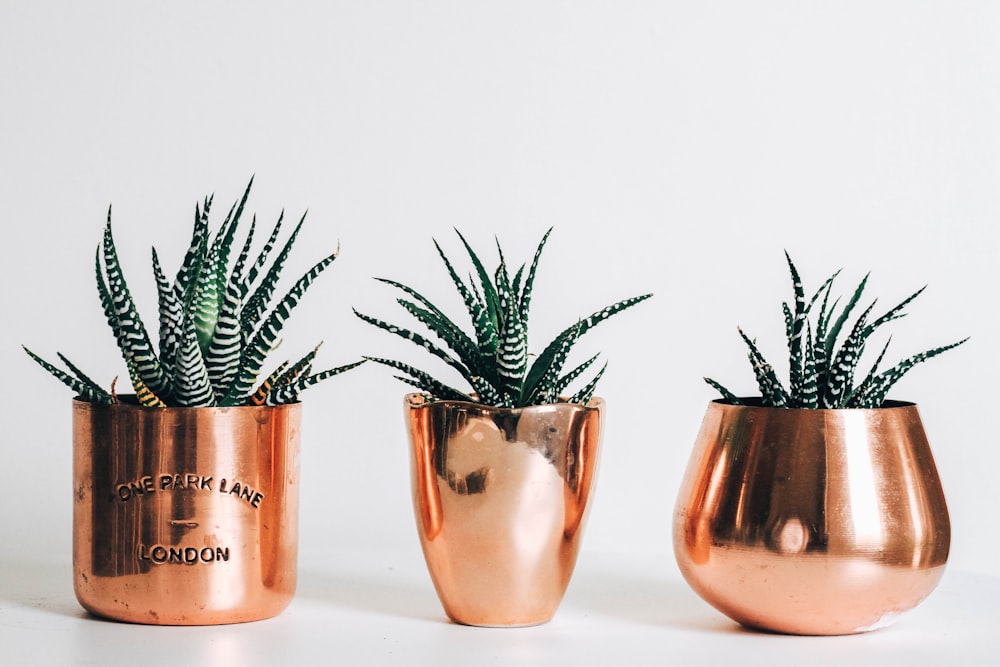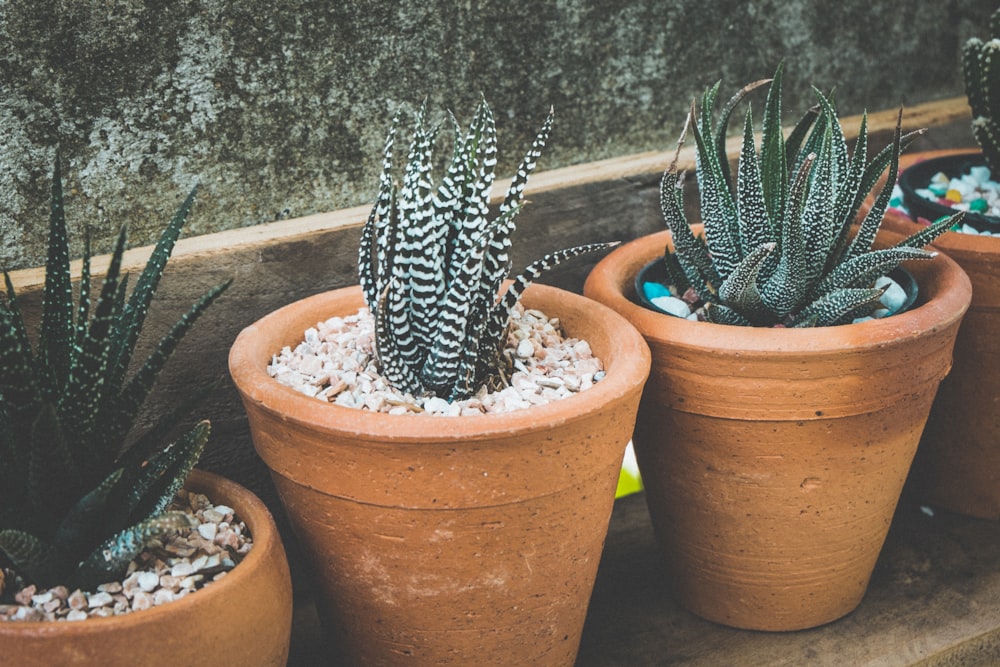Haworthia Fasciata and Haworthia Attenuata are also known as “zebra succulent”, “zebra haworthia”, or “zebra cactus” (even though they are not a cactus!). Zebra succulent care is easy because Haworthia thrive on neglect, making them perfect plants for beginners. They also propagate easily through offsets, so you can multiply your collection without doing anything!
The zebra plant is native to South Africa and related to aloes, so it’s care is similar. If you have a healthy aloe in your collection, chances are your Haworthia will do great too! Plus, they can grow even in low light conditions, unlike many other succulents, making them a good pick as an office plant.
Haworthia form a rosette of thick leaves with horizontal white stripes (growths). Their thick leaves allow them to store plenty of water in their native desert climate.
These are tips and tricks specific to zebra succulent care. For a general guide to taking care of all succulents, click here.
| Name | Haworthia Fasciata and Haworthia Attenuata Zebra plant, Zebra Haworthia, Zebra cactus |
| Sunlight | Partial sun |
| Water | Once every two weeks in the winter and summer once every 10 days in the fall |
| Soil | Well-draining, porous soil |
| Temperature | Warm and dry. Not cold hardy |
| Dormancy | Summer Dormant |
| Propagation | Offsets |
| Toxicity | Non-toxic |

Zebra Succulent Care:
Sunlight
Zebra plants do best with 4 to 5 hours of partial sun per day. This makes them great plants if you live somewhere that does not receive a lot of natural sunlight. East or West-facing windows are best for Haworthia since they provide a good combination of sunlight and shade without burning it. South-facing windows may provide too much sunlight, depending on your location.
If Haworthia receive too much sun, they can turn brown and dry out. If you notice the tips of your Haworthia turning brown, it is receiving too much sun. Move it to a shadier area to prevent further damage.
Watering needs
Haworthia have the same watering needs as other succulents. Their thick leaves allow them to store plenty of water. As with your other succulents, cautiously water your Haworthia to ensure it does not rot, because they are very susceptible to overwatering.
Haworthia grow most actively in the fall, and should be watered the most during this time (about every 10 days). Watering frequency should be decreased in the summer and winter months (about once every 2 to 3 weeks).
Remember, the temperature, humidity, type of pot and soil mix all play a role in how frequently your plant should be watered. Use the above schedule as a rule of thumb and adjust as you need to based on your specific area.
Learn more about watering succulents
In addition to the above schedule, it is important to check the moisture in your soil. Check that the top inch of soil is completely dried out before watering again. If it still feels a bit moist, wait a few more days. When watering, the succulent’s soil should be soaked enough that you see water begin to seep out of the drainage hole (if your pot has one). You should pour the water on the soil at the base of the plant. Do this about once a week, allowing the soil to dry out in between waterings. Remember: Infrequent soakings are key!
When you water, pour the water right at soil at the base of the plant.
Do not get water directly on the leaves of the plant, because that could cause rot. If you do get some water on the leaves, wipe it off with a tissue.
Potting
A fast-draining, porous soil mix can help prevent Haworthia from rotting. I like to use a 70:30 ratio of succulent soil to perlite.
Because of the striped pattern on these plants, they look great in colorful/striped pots to highlight their unique features.
Haworthia have large root systems, so they do well when planted in deep pots.
Haworthia are slow growers, but when they do outgrow their pot, re-pot them in the spring or early summer into a new container with fresh potting soil.

Zebra plant propagation
Like aloes, zebra plants produce offsets (pups) that sprout up from the base of the plant. Once the offset is about 1/4 of the size of it’s parent, you can carefully remove it from the parent, using a clean pair of garden shears as necessary. Allow the roots to dry for a day or two, then replant in a new pot. Wait a week after repotting to water the pup to avoid damaging the roots. Water the pups about once a week and provide it with bright, indirect sun.
However, if you want your Haworthia to grow in clumps, feel free to leave them as is!
Climate
These plants are native to South Africa, so they do best in hot, dry areas. A temperature from around 70 to 80 ºF (21 to 26 ºC) is best. They are not cold hardy and should not be left in an area colder than 35 ºF (1.5 ºC) as that can damage the plant.
Flowering
Flowering is a great sign that your plant is healthy. Haworthia usually flower in the fall. These flowers grow on a tall stem and are white or pink.

Zebra succulent care: Haworthia attenuata vs Haworthia fasciata
Both of these species are known as “zebra plants”. So what exactly is the difference between the two? While they do look similar, there are some subtle differences between the two species.
The main difference is in the leaves:
- Haworthia fasciata’s inner leaves are smoother and fatter
- Haworthia attenuata’s leaves show more warty growths.
The two have the same care requirements.
Common zebra succulent care problems:
Haworthia is turning brown and mushy
If this is the case, your Haworthia is probably suffering from root rot due to overwatering. This is a common problem and can be difficult to fix. Allow the soil to dry out and decrease how often you water your plant. If the damage is extensive, you may have to cut away the healthy parts of the plant and focus on growing those.
Haworthia is turning brown and the tips look dried out
While a few dried leaves at the bottom are normal, many wrinkled and dried out and “crispy” looking leaves are a sign your zebra plant is getting too much sun.
Direct sunlight turns the leaf tips of zebra succulent brown and dries them out. Move the plant to a shadier spot. If you catch the damage in time, the Haworthia’s new growth will go back to it’s pretty dark green color.
Overall, Haworthia fasciata and Haworthia attenuata make a great addition to any garden and are especially great for beginners. Their unique striped pattern will definitely make them stand out.


Learn more about general succulent care here:








